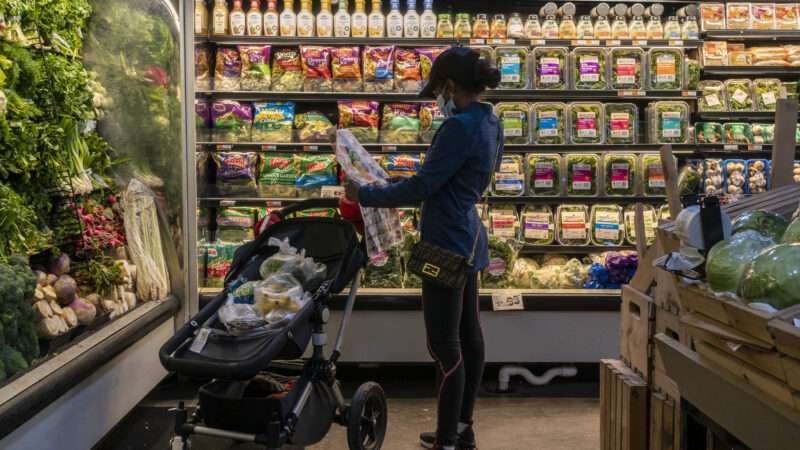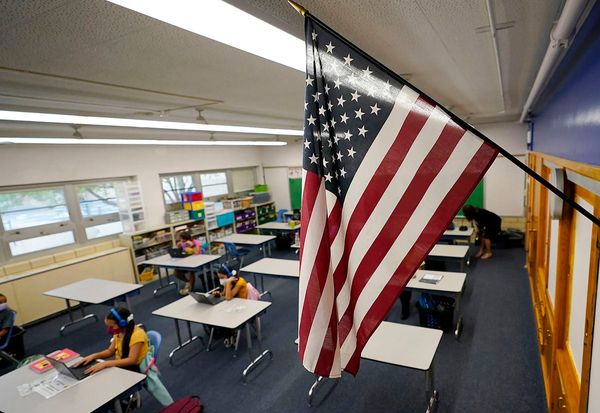
There are many takes on who's to blame for inflation. It's the president. It's the former president. It's supply chains. It's Russia. It's corporations.
With inflation now at 8.5 percent, understanding who is at fault matters. And with underlying issues ranging from the economic effects of COVID-19 and decisions made by central banks to policies enacted under recent presidential administrations and the interconnectedness of the global economy, there's plenty of blame to go around.
Inflation is a general rise in the cost of goods and services. It can occur for two reasons: an increase in the supply of money relative to the supply of goods or an increase in demand for goods relative to supply. While not all price increases are evidence of inflation—prices also fluctuate based on supply and demand—a sustained increase in prices across the board is evidence that one of these phenomena is at play.
One claim—that corporate greed causes inflation—can be easily dismissed as it offers little explanation for why it didn't cause inflation in the past. And the argument's biggest proponents—Sen. Elizabeth Warren (D–Mass.) and Sen. Bernie Sanders (D–Vt.) chief among them—never credit corporate generosity for lower prices. Similarly, the claim that President Joe Biden is solely to blame is untrue. The roots of inflation are numerous and disconnected from partisan narratives.
That's not to say Biden hasn't played a key role. Inflation climbed shortly after his election, and there's no end in sight. His signature achievement, the American Rescue Plan (ARP), pumped more cash into an overheated economy when supply chains could not keep up, spending almost $2 trillion when the output gap was closer to $400 billion. That's nearly five times more than what was needed, and the impact was predictable. Experts like Harvard's Lawrence Summers have been sounding the alarm for over a year.
But Biden's big spending bills weren't enacted immediately. The ARP wasn't signed until March 2021, and much of its spending occurred over several months. Likewise, the Infrastructure Investment and Jobs Act—another commonly cited source of inflationary pressure—didn't pass until last November, and its spending won't peak until 2026. Plus, a study by the Chicago Federal Reserve found that the ARP alone can only partly explain recent inflation.
Those findings shouldn't be a surprise, because significant spending was underway before Biden ever made it to the Oval Office. Even before the Coronavirus Aid, Relief, and Economic Security (CARES) Act—the most expensive bill signed by Donald Trump—the federal government was spending unprecedented amounts due to COVID-19. This act included cash payments to most Americans, housing assistance, boosted unemployment checks, and a pause on student loan repayments, which was recently extended by Biden. These actions may have been necessary at the time, but such policies began under Trump and are contributing to inflationary pressures now.
Putting the pandemic aside, Trump spent extravagantly, spending more in four years than President Barack Obama did in eight. While Biden may be fanning the flames of inflation, Trump collected the kindling and lit the match.
Not that Democratic policies would have been better. They pushed for more generous "enhanced unemployment," flooding states with cash, and near-permanent stimulus payments to parents. While only some of their ideas were enacted, the cash distributed didn't disappear, and neither did additional spending by many blue-state governors.
And while the 2020 election happened alongside increasing prices, an expansion of the money supply occurred long beforehand. This is important because one cannot understand inflation without considering the Federal Reserve. No president controls interest rates or dollars in circulation: Jerome Powell and the Federal Open Market Committee do. And Powell admitted last year that they got inflation completely wrong.
The Federal Reserve isn't the only central bank at fault. Just as worldwide governments spent generously on pandemic relief, the threat of recession made central banks across the world hesitant to raise interest rates in response to rising prices. The European Central Bank has kept rates consistent since early 2016. Meanwhile, the United Kingdom raised rates to where they were pre-pandemic, but like the Federal Reserve, the Brits lowered interest rates during the last two years.
Cheap credit might be appropriate when economies face unexpected shocks, but it becomes a problem once demand roars back. But even if central bankers and other policymakers weren't following each other's lead, there's further reason to expect inflation to be spiking now.
Inflation in the Eurozone sits at 7.5 percent, and price levels in the United Kingdom look similar. To an extent, these phenomena occur independent of the U.S.—it's ridiculous to suggest Biden's inauguration sparked inflation nearly 3,600 miles away. But just as Russia's war can impact the price of gas and wheat, the United States, too, can export inflation across the globe in an interconnected economy.
Breakeven inflation is now the highest it's been in the 21st century, but blaming any one person or policy only captures part of the economic picture. In reality, many actions—some recent and some dating back five years—primed the pump and escalated a worldwide run-up in prices.
Just as no one person caused our current predicament, it's unlikely any one person can solve it. Inflation will only abate when the pandemic ends, central banks roll back easy money policies, the private sector increases production, the supply chain stabilizes, and, yes, governments finally undertake more responsible levels of spending.
The post Who's Really To Blame for Inflation? appeared first on Reason.com.







